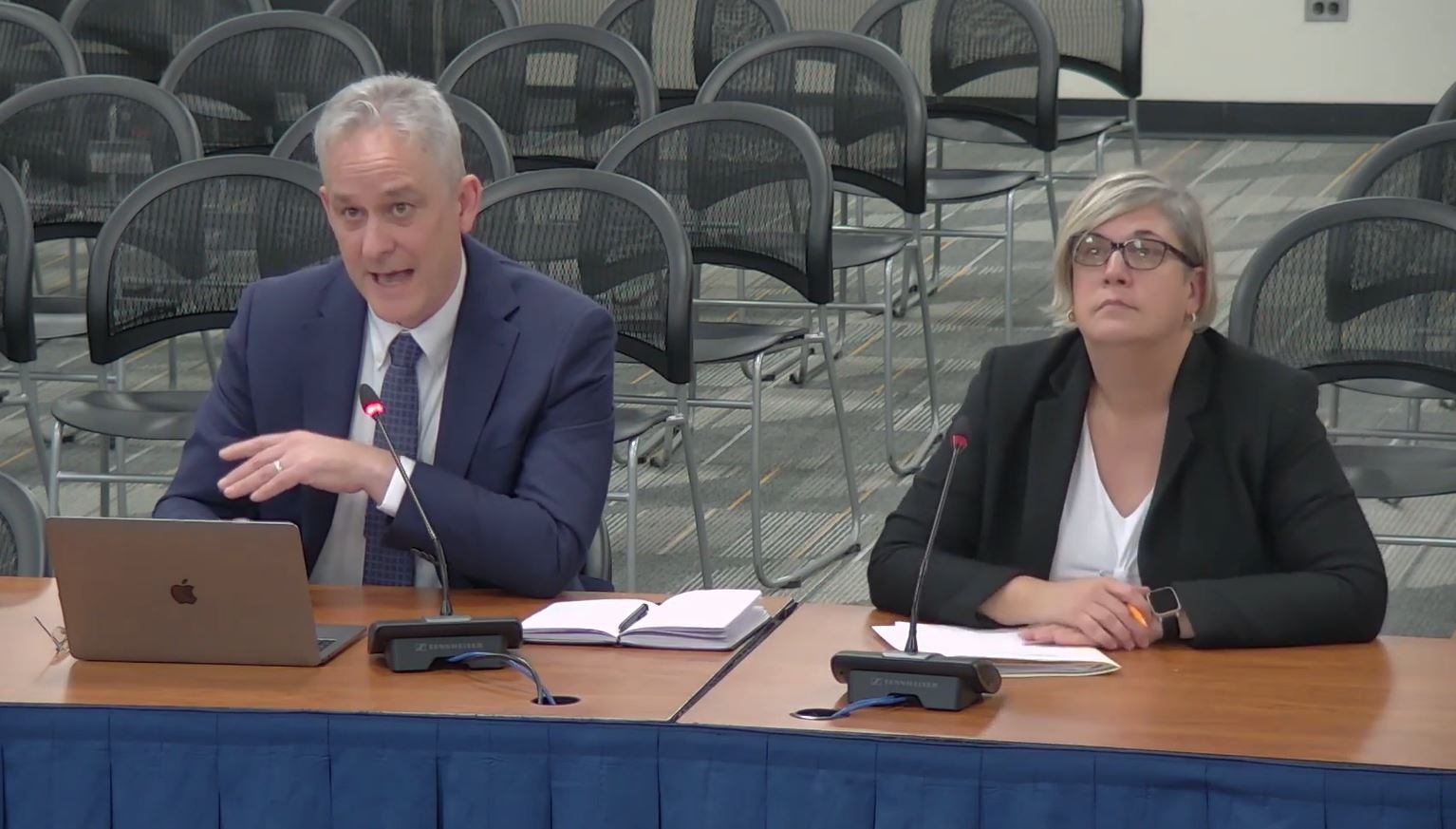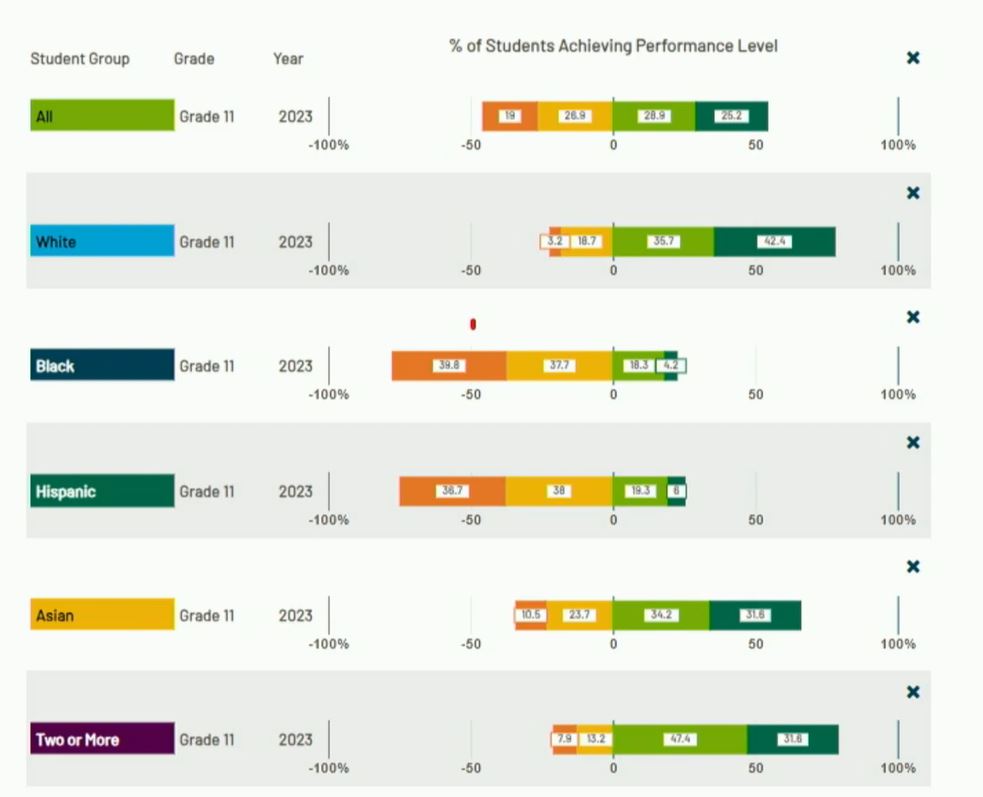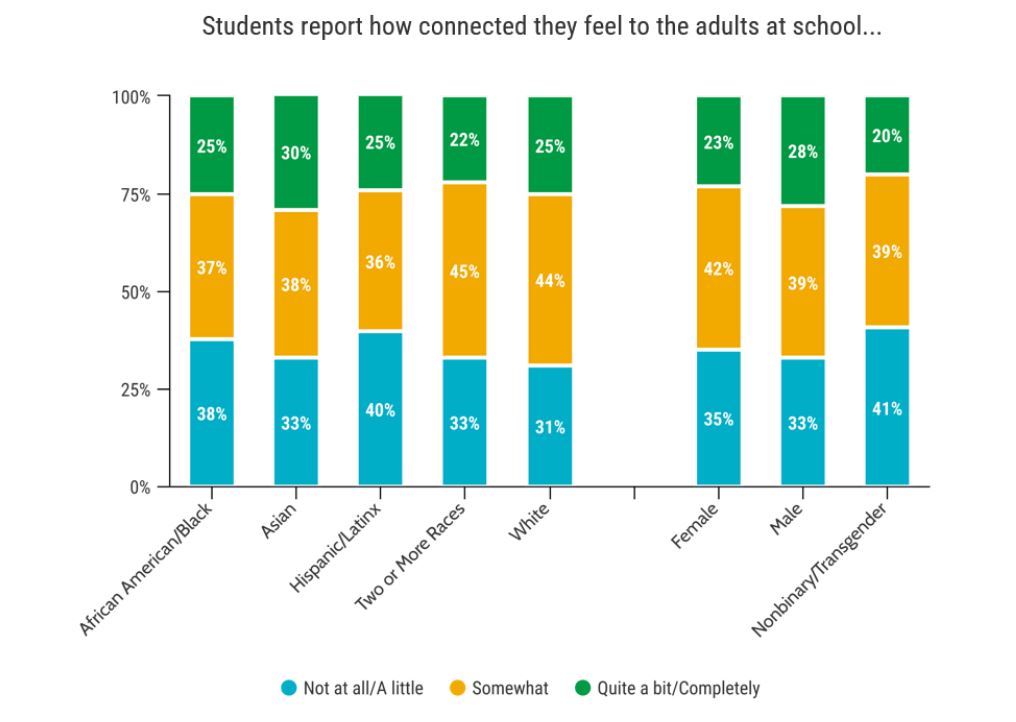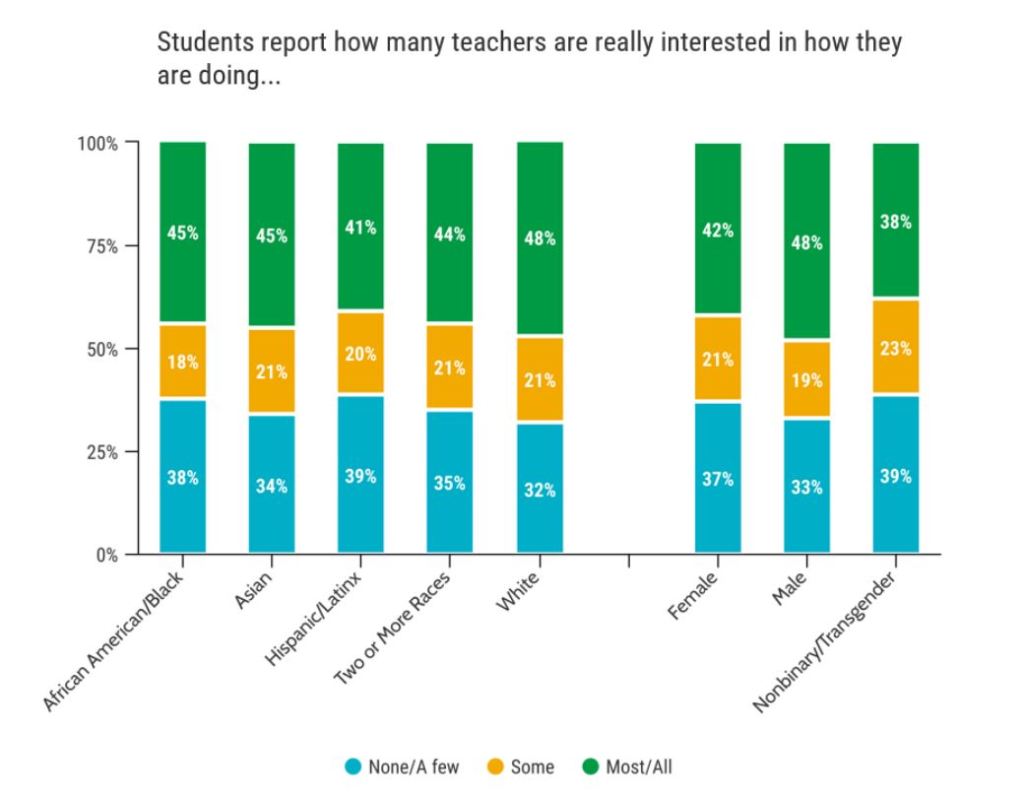Evanston Township High School students showed a slight improvement in both math and English/language arts performance on the spring 2023 SAT test after achievement in both subjects hit a six-year low in 2022, according to Illinois School Report Card data presented to the ETHS board last week.
But the overall percentage of students meeting or exceeding state standards on the annual test remains lower than in pre-pandemic years. And, despite it being a top priority for the district over the last decade, a gap in educational outcomes by race, income and ability status – a much larger one than the state average – persists.
“There’s always a discrepancy within our own data that is really significant between white and for the most part Asian, and on the other side, Black/Brown students, students with IEPs [individualized education programs], multilingual students, low-income students and homeless students,” said board member Leah Piekarz.

Students fall into categories of “partially meeting,” “approaching,” “meeting” or “exceeding” state standards.
In English/language arts at ETHS, 77% of Black students, 75% of Hispanic students, 95% of English learners, 80% of low-income students, 83% of students with an IEP and 23% of white students partially met or approached state standards on the SAT.
In math, 88% of Black students, 81% of Hispanic students, 95% of English learners, 86% of low-income students, 90% of students with an IEP and 34% of white students partially met or approached state standards, the two lowest categories.
“That’s not good,” Piekarz said.
Those numbers show that a majority of white students at ETHS are meeting SAT academic standards, and a majority of students of color, low-income students, students with disabilities and English learners are not. Reflecting on that situation, board President Pat Savage-Williams highlighted a talk that education researcher and sociologist Sean Reardon gave to the board nearly a decade ago.
“I think about that session all the time, that Evanston is probably one of the best places, if not the best school district, for white students,” Savage-Williams said. “That was true eight years ago, and it’s true now. So that is pretty amazing.”
Assistant Superintendent for Curriculum and Instruction Pete Bavis said he couldn’t predict how important of a measurement the SAT will be three, four and five years down the road, because the key areas of focus for college admissions continue to evolve rapidly as more universities become test-optional.
But Bavis did stress that “math is still an area of great, great need,” and “is a real challenge for students at ETHS, and it looks like across Illinois.”
With that in mind, ETHS is reworking its “geometry with support” class for ninth graders starting in the fall of 2024, according to Bavis. He said teachers have found that many students placed into that course really struggle with their algebra skills, so next year, instead of having them work on geometry and algebra concurrently, those students will exclusively take algebra in a classroom with two teachers. About 60 or 70 students will be impacted by that change, he said.
“I want to assure the board that the administration has a number of plans in place that we are vetting through the staff to address the very things you’re talking about tonight, in a new way. Not the same old stuff we’ve been doing,” said Superintendent Marcus Campbell. “We’ve got stuff coming that’s pretty big, so stay tuned.”
Classroom performance
Last year ETHS seniors finished with a cumulative unweighted average Grade Point Average of 3.23, down slightly from 3.25 in 2022, but up from 3.1 and 3.0 in the four years prior. The graphs below show the average GPA for seniors going back to 2019, disaggregated by race, gender, income and ability status.
The state has a college and career readiness benchmark GPA of 2.8. Last year, Black students, students on free or reduced price lunch and multilingual students did not reach that goal, on average.
“Our Black students, for lack of a better word, they’re at the bottom consistently, still, and they’re being outperformed, consistently,” said board Vice President Monique Parsons. “That’s not every Black student, I want to be clear on that, but, as a whole, the class, they’re close to the 2.8 GPA, but they’re not there. We need to marinate in that for a while, because it’s not good, still.”
Meanwhile, 89% of freshmen finished last year on track to graduate on time, meaning they have completed 10 semester credits with no more than one F in a core class. That percentage is down from 93% in 2022.
Four groups had less than 80% of freshmen on track to graduate after last year: Black students, students with an IEP, students on free or reduced price lunch and multilingual learners. Students with an IEP had the lowest number on track to graduate, with just over 70%.
“We need to be all over it, because there’s 10% of our students who are not on track, and we need to grab them and get them on track, do whatever it takes,” said board member Gretchen Livingston. “This is why it’s important that we are connected with District 65, because these freshmen come in the door, and we only have them for a tiny little bit of time, and what they’re coming in the door with is whatever they got from District 65.”
In one piece of good news, the percentage of graduating students who took at least one dual credit, Advanced Placement or Project Lead the Way course was way up last year at 88%, versus 70% in 2022.
Student wellbeing
As shown below, on the spring 2023 wellbeing survey completed by 80% of the student population, 56% of all students reported feeling like they belong quite a bit or completely at ETHS, 25% reported feeling quite a bit or completely connected to the adults at school and 45% said most or all of their teachers are really interested in how they’re doing.
Nonbinary and transgender students reported the lowest sense of belonging and connectedness across all three categories, with 39% saying they belong quite a bit or completely.
“It just seems to me that more than half of our students, a lot more than half of our students – almost all of our students – should feel like they belong all the time. I don’t know how we crack that nut, but it surprises me, and it has to do with connections within this building,” Livingston said. “I think we have a very large student body compared to most schools, and we do our best to make it feel small, but I think it’s very easy for individual students to simply be lost in this mix.”
Livingston suggested teachers and administrators need to employ systematic targeted outreach to students who are more likely to slip through the cracks, though Campbell responded that ETHS does have a system. One issue might be that students take the wellbeing survey in February, when morale is typically at a low point during every school year, he suggested.
“This is just one snapshot in time in February,” Campbell said. “I would say overwhelmingly that our system is trying to be very responsive to kids who don’t feel connected, especially our nonbinary and transgender kids.”











